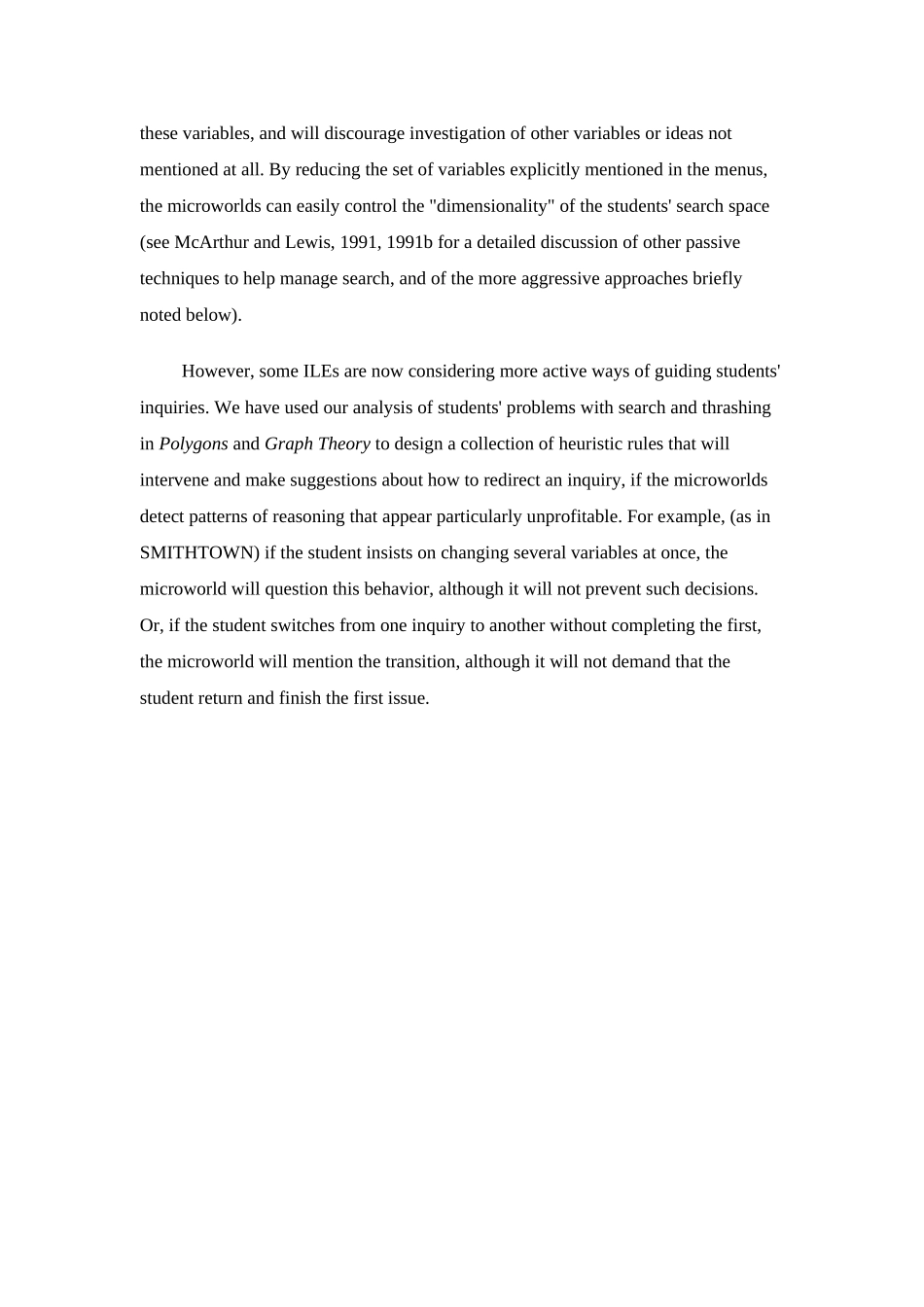ITS and ILEs are often discussed as if they were they were the only two distinct approaches to developing knowledge-based systems for education. On the surface, this paper -- discussing first ITS then ILEs -- perpetuates that image. However, on a more careful reading, it should be apparent that a field which began with two relatively clearly opposing positions has now begun to fracture into a multitude of related systems and approaches. Instead of two points of view on the application of artificial intelligence to education, it is more accurate today to see the field as a continuum, with omniscient, tutor-controlled ITS on one end, and completely student-controlled ILEs on the other. The continuum represents a variety of different ways of dealing with the problems and weaknesses of the two opposing approaches, outlined in the previous sections. In general, the weaknesses of one approach can often be creatively confronted by borrowing some of the strengths from the opposite extreme, in effect creating a range of systems. Such systems may blend various kinds of tutor- and student-controlled activities. Consequently they are beginning to resemble one another in structure and design, although they often claim distinct conceptual lineages -- for example "constructionist" versus "instructionist" theoretical foundations -- associated with the extreme end points (Papert and Harel, 1991). At the ITS end of the continuum, one major problem is that a thoroughgoing intelligent tutor must be highly knowledgeable about the subject it tutors. For every problem it poses to the student, or every request for information and help from the student, the system is expected to know the "right" answer. This demand for omn...


